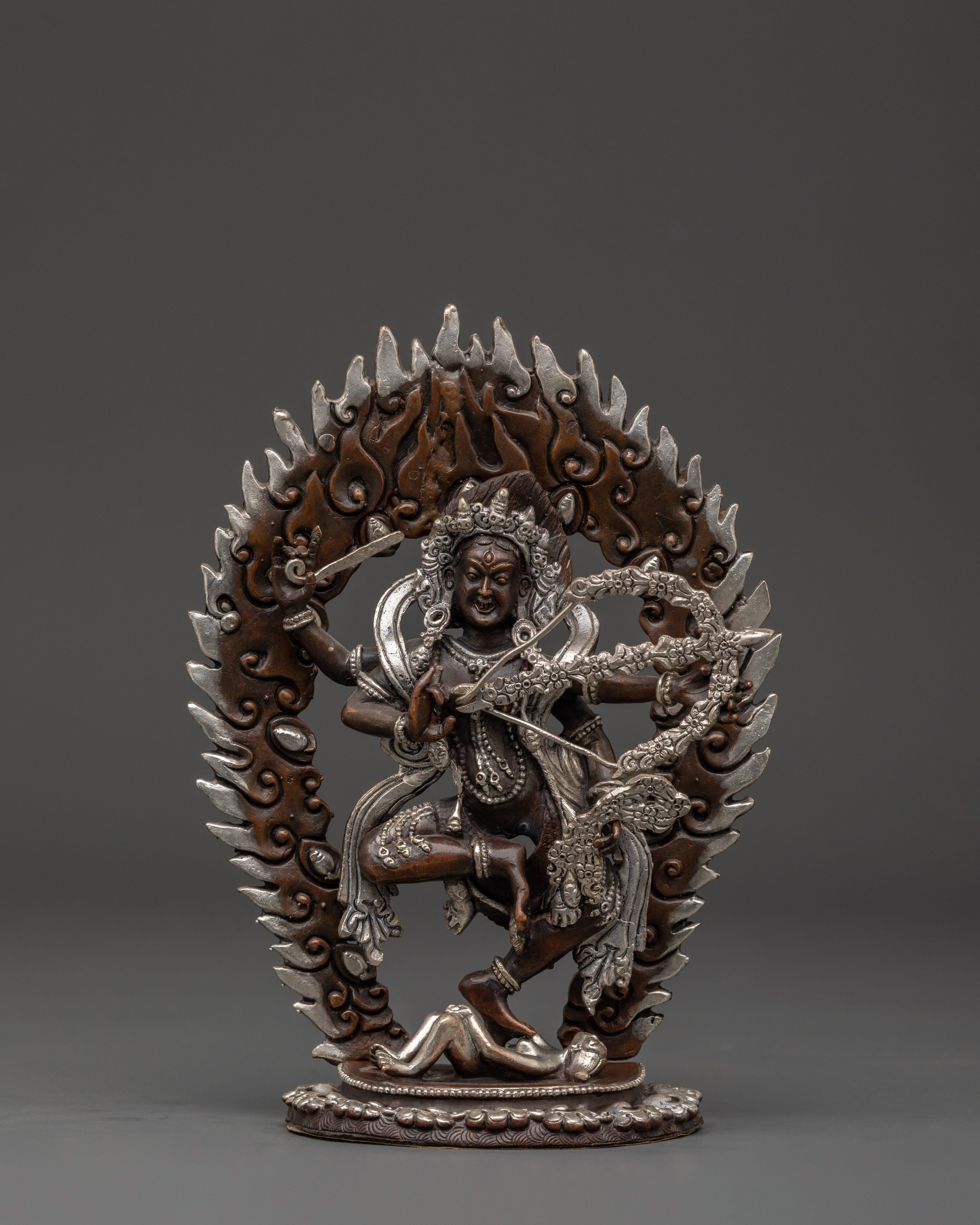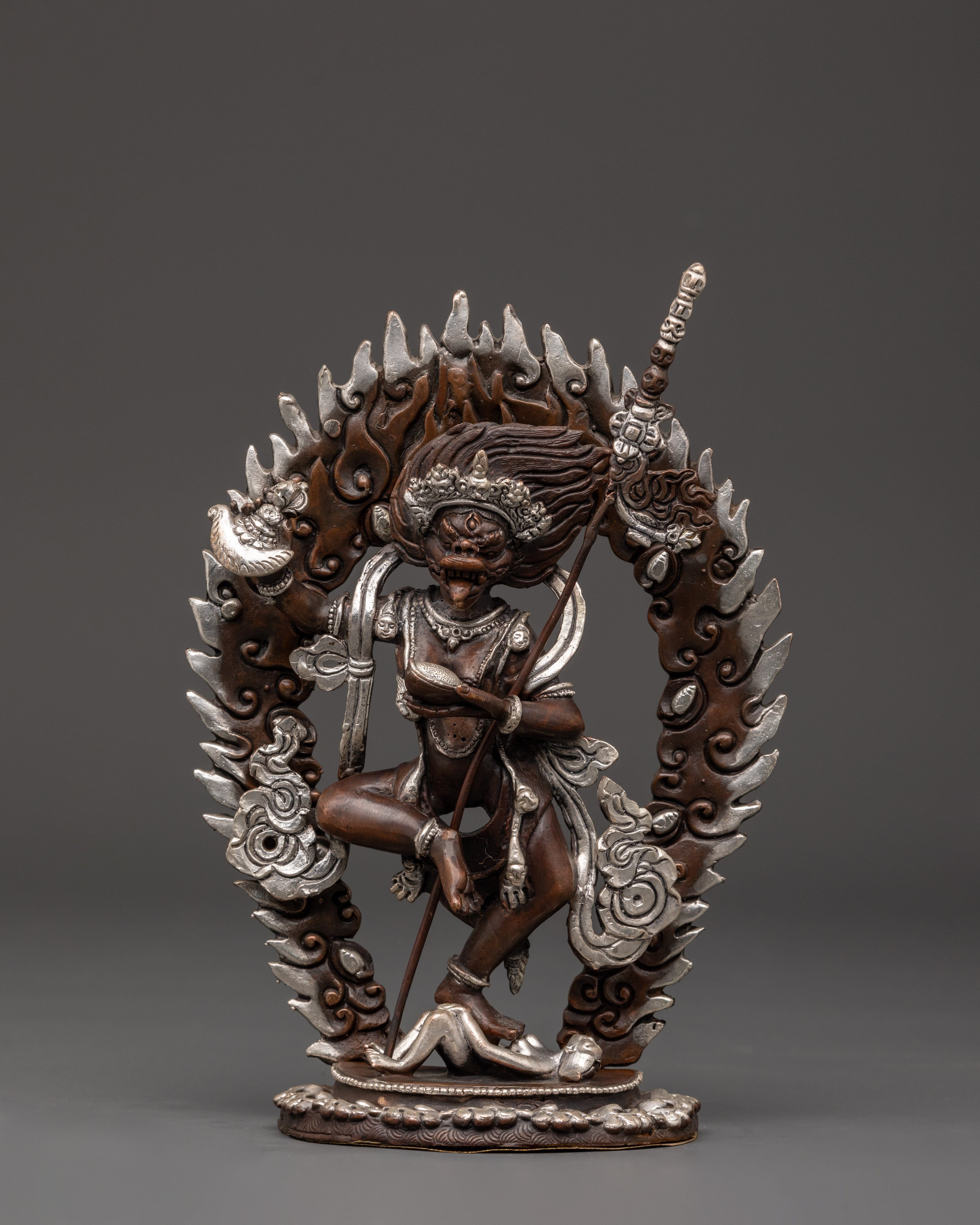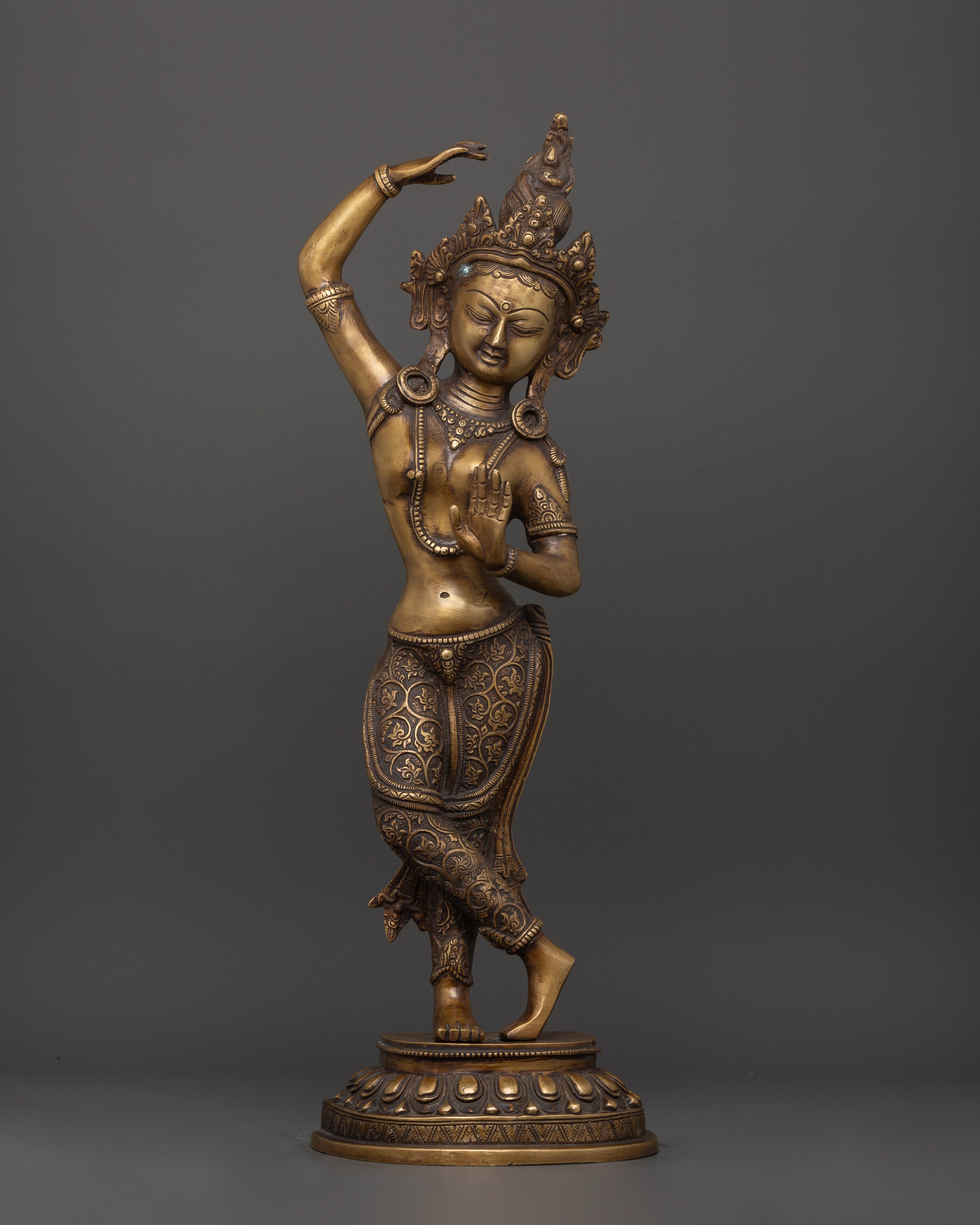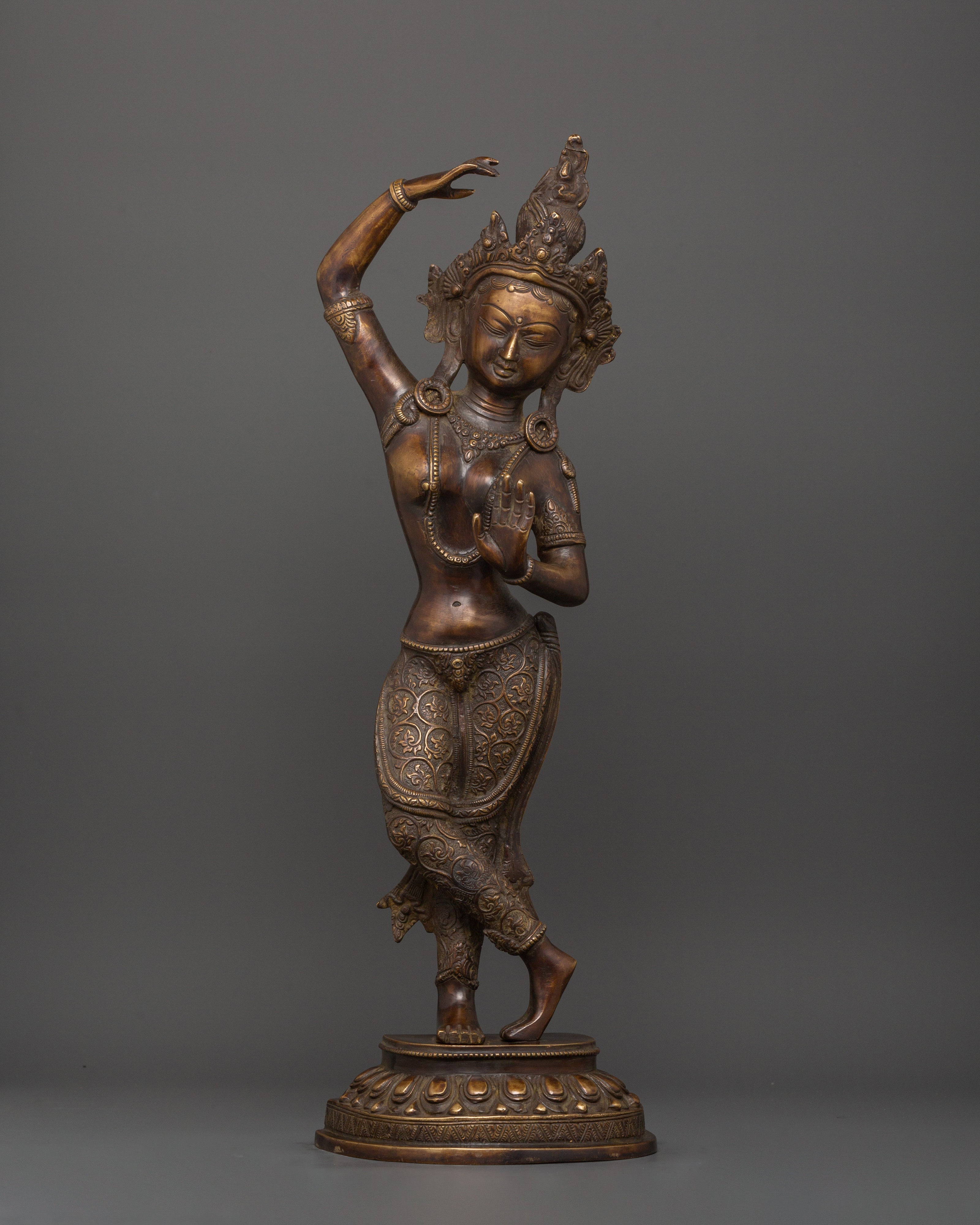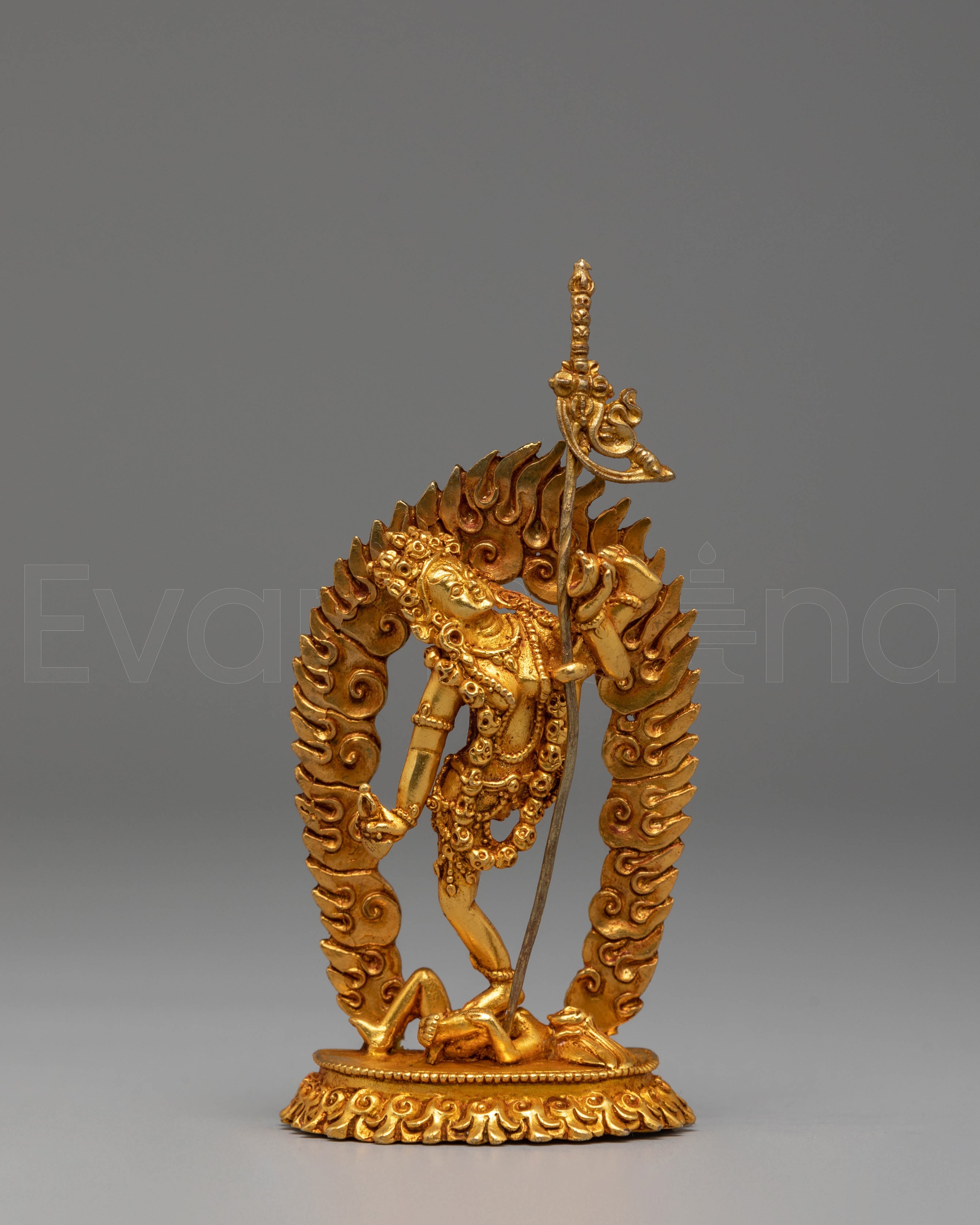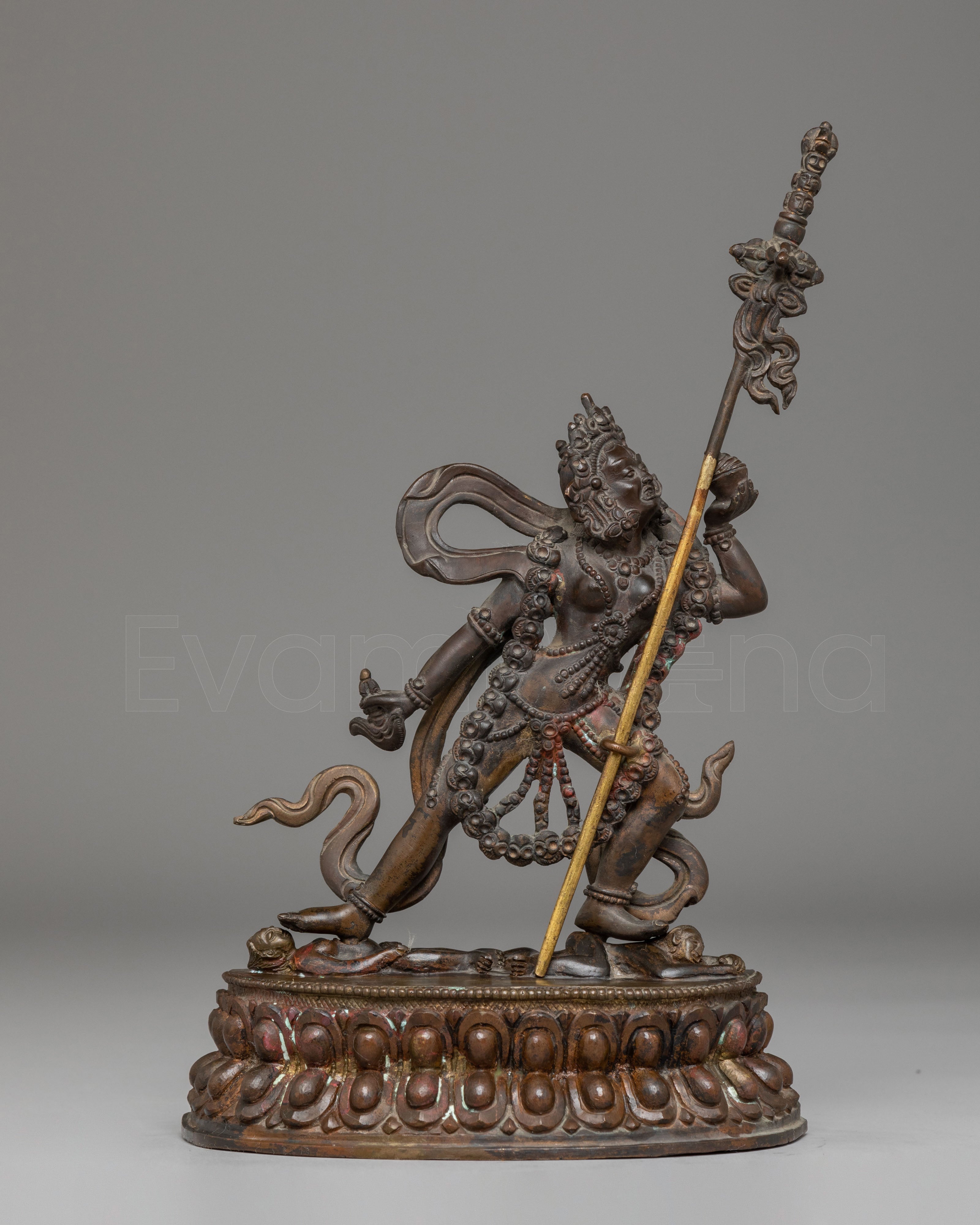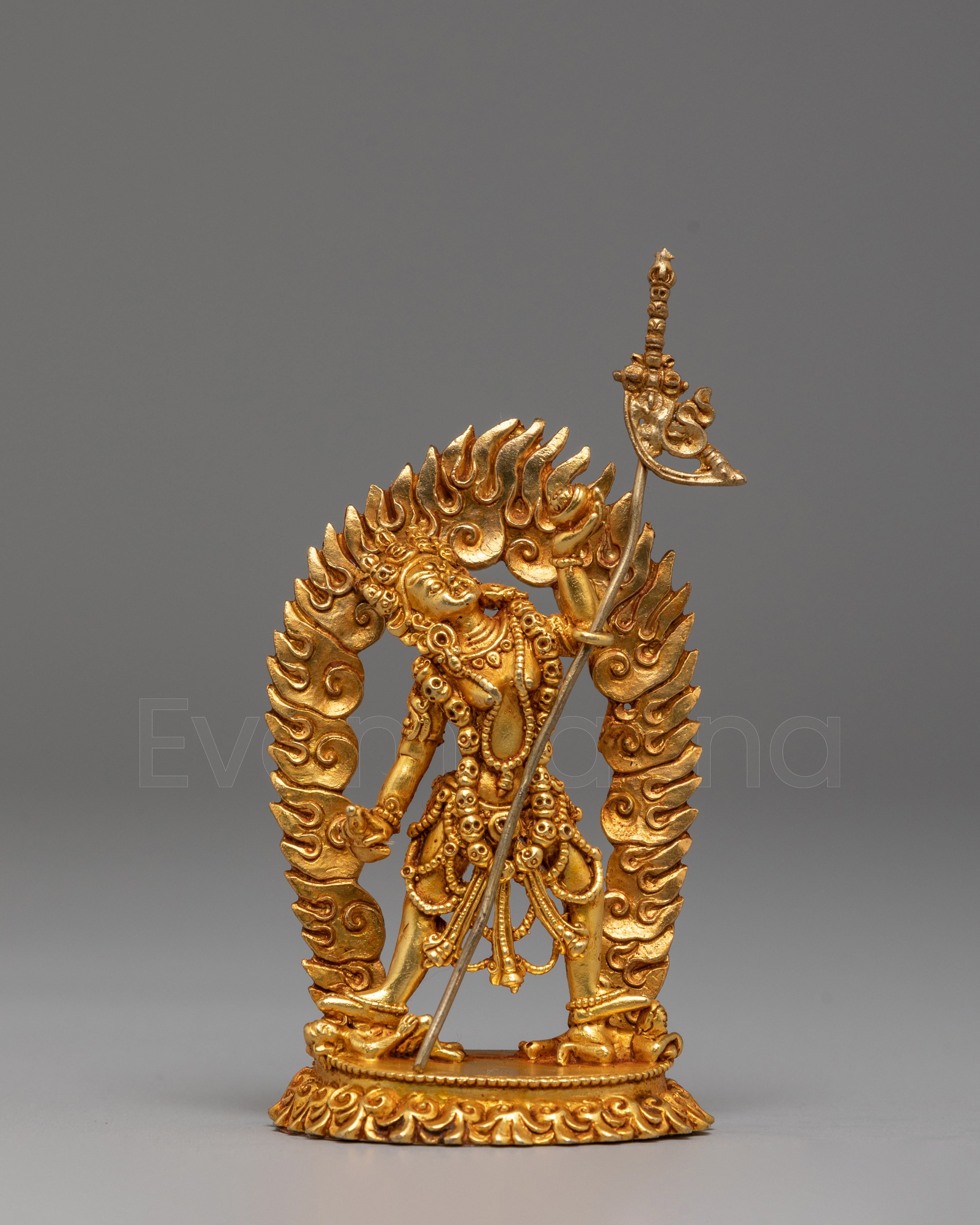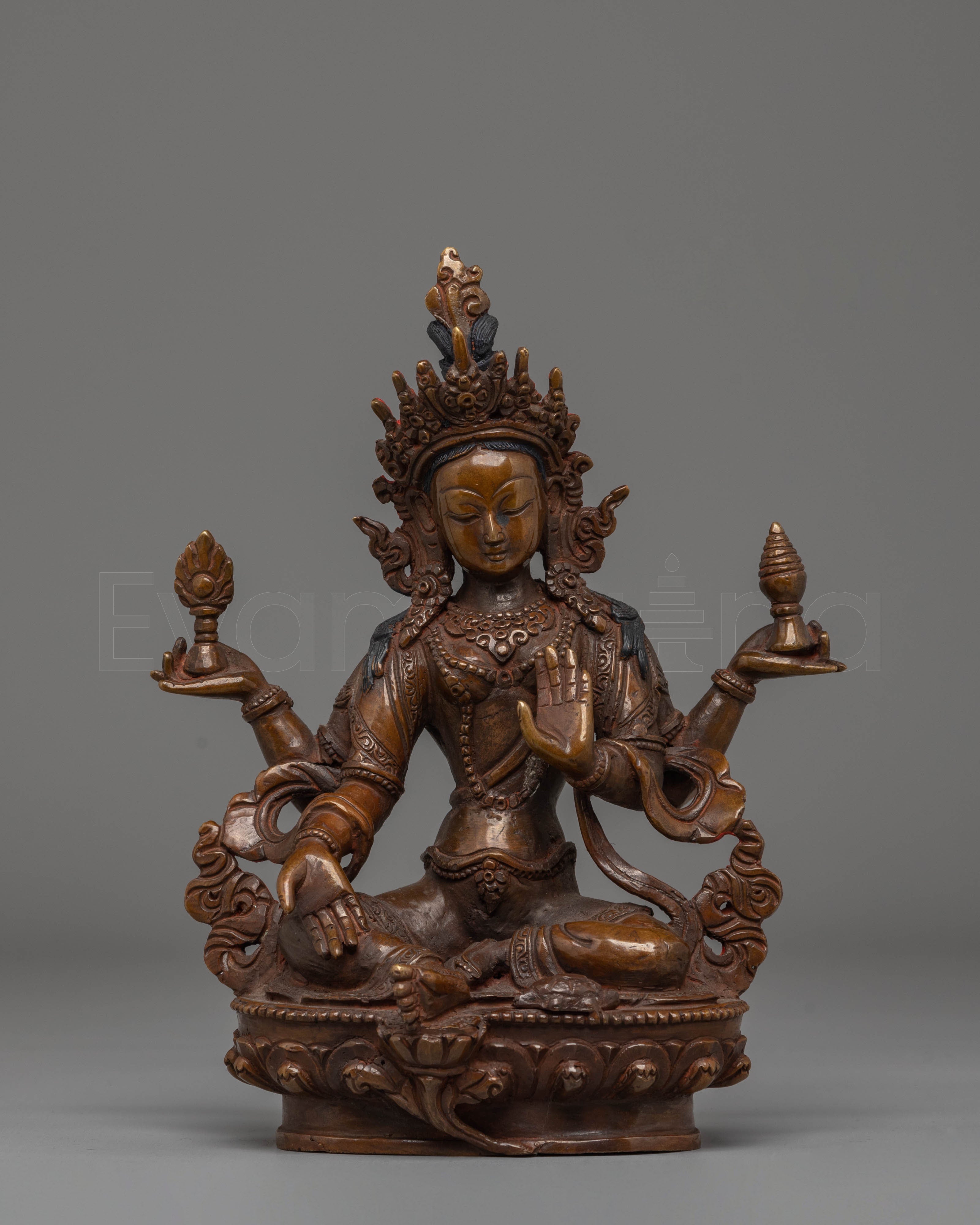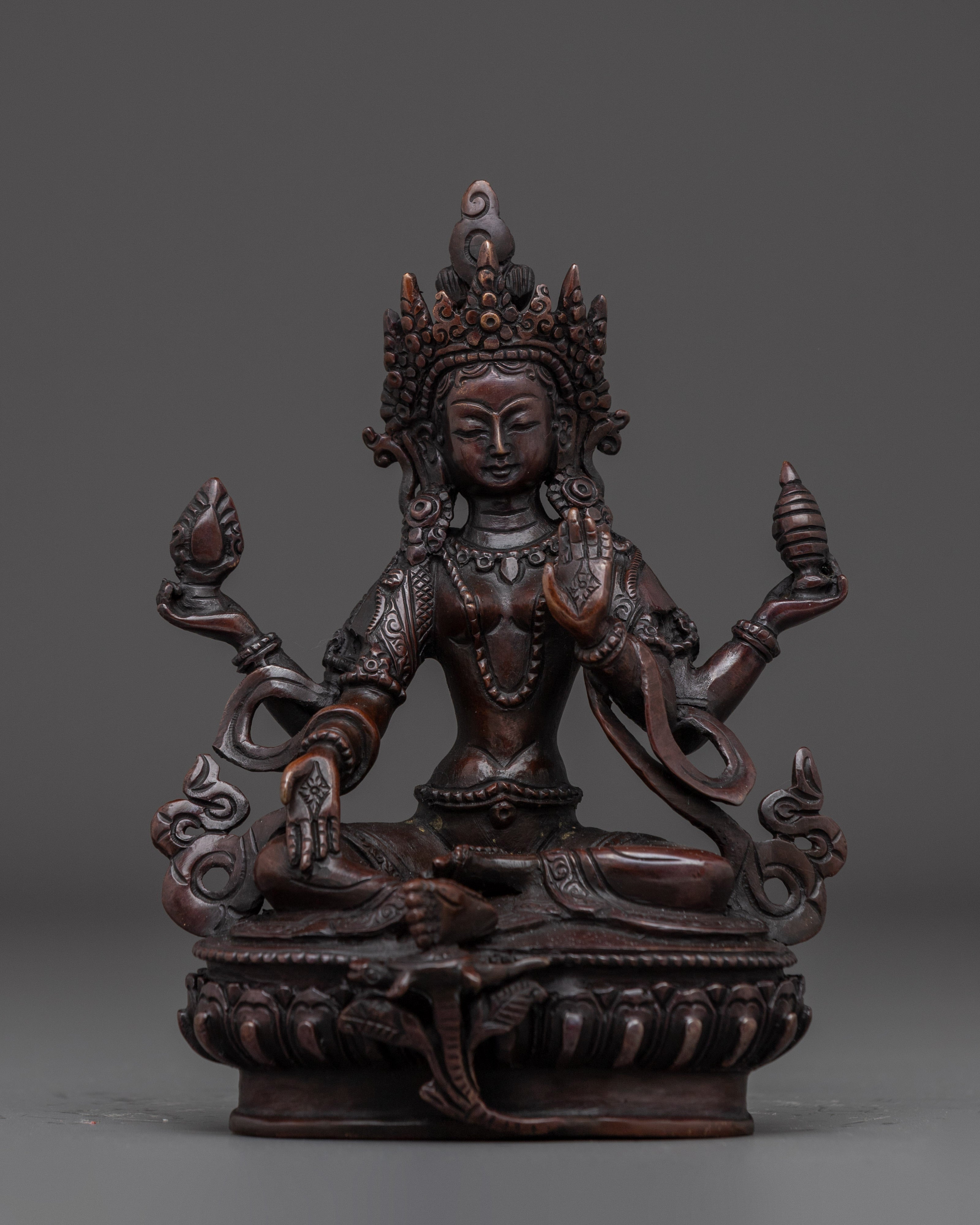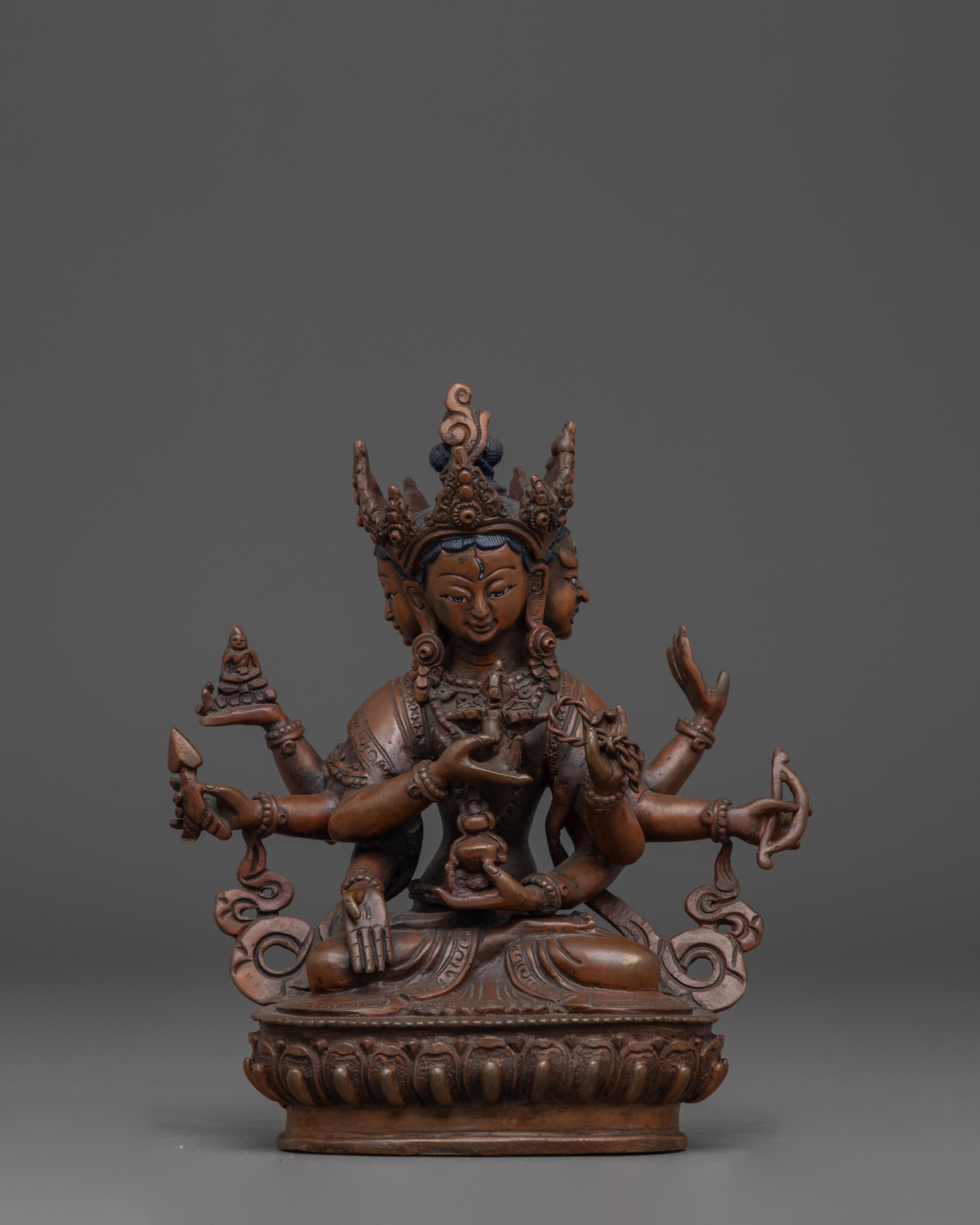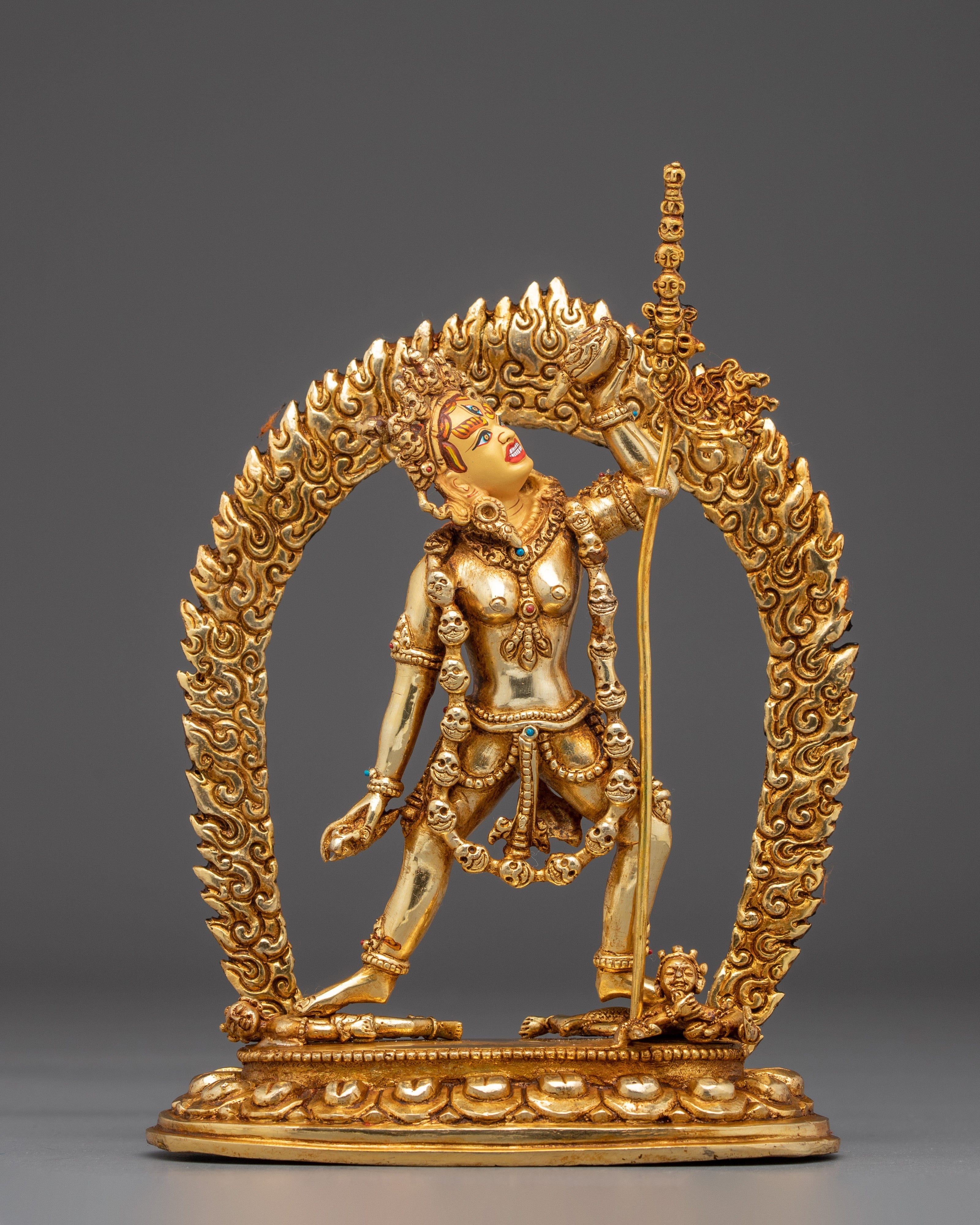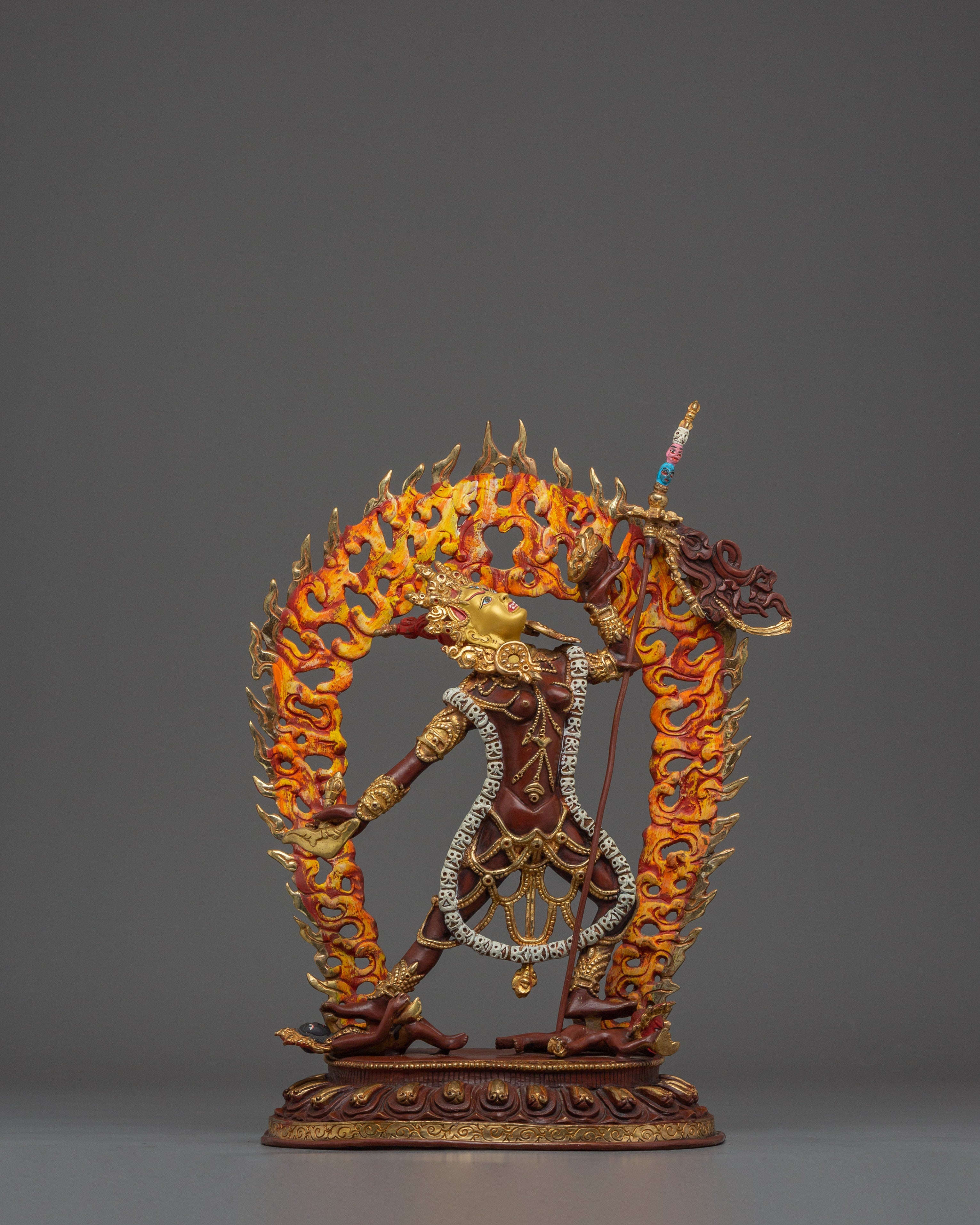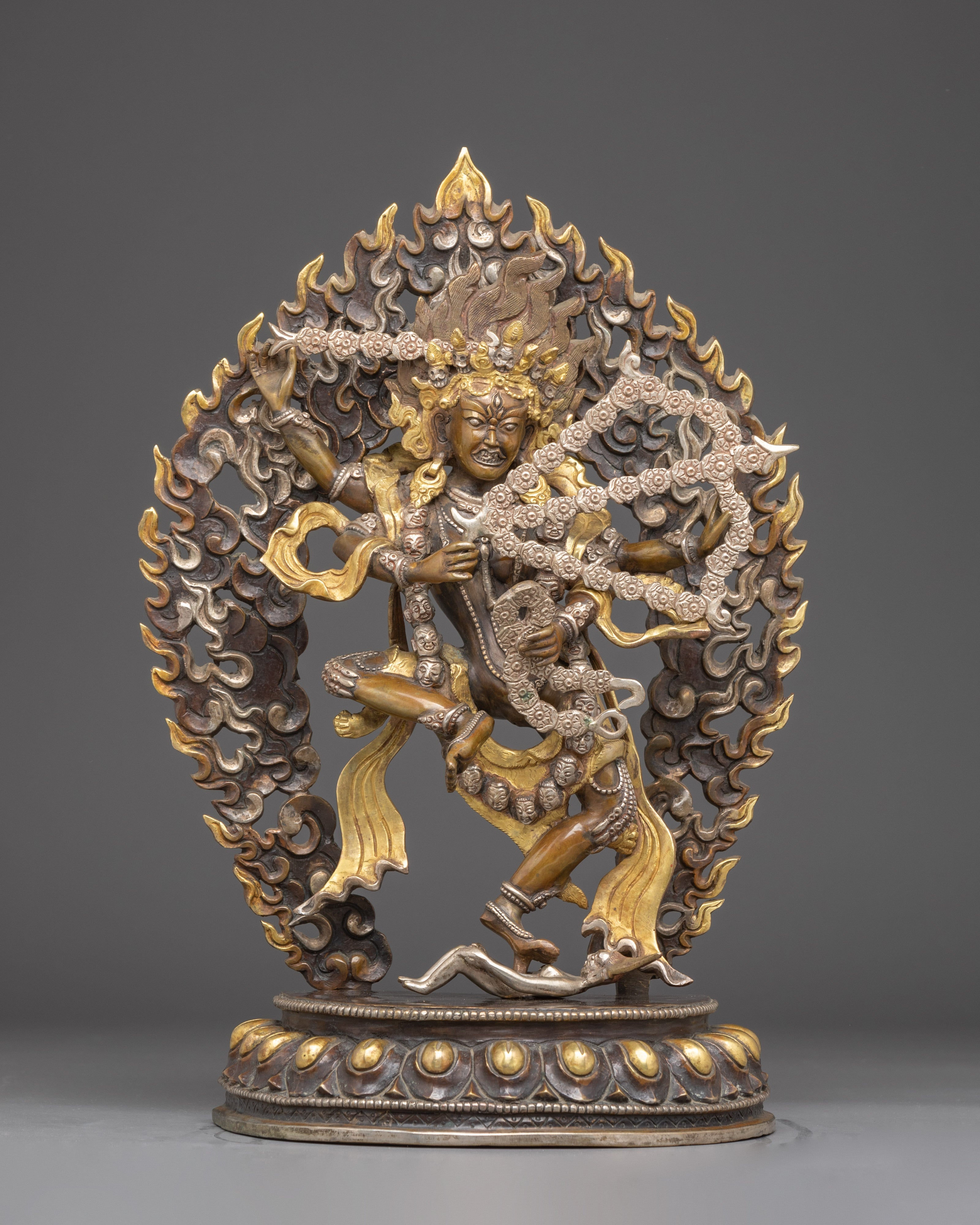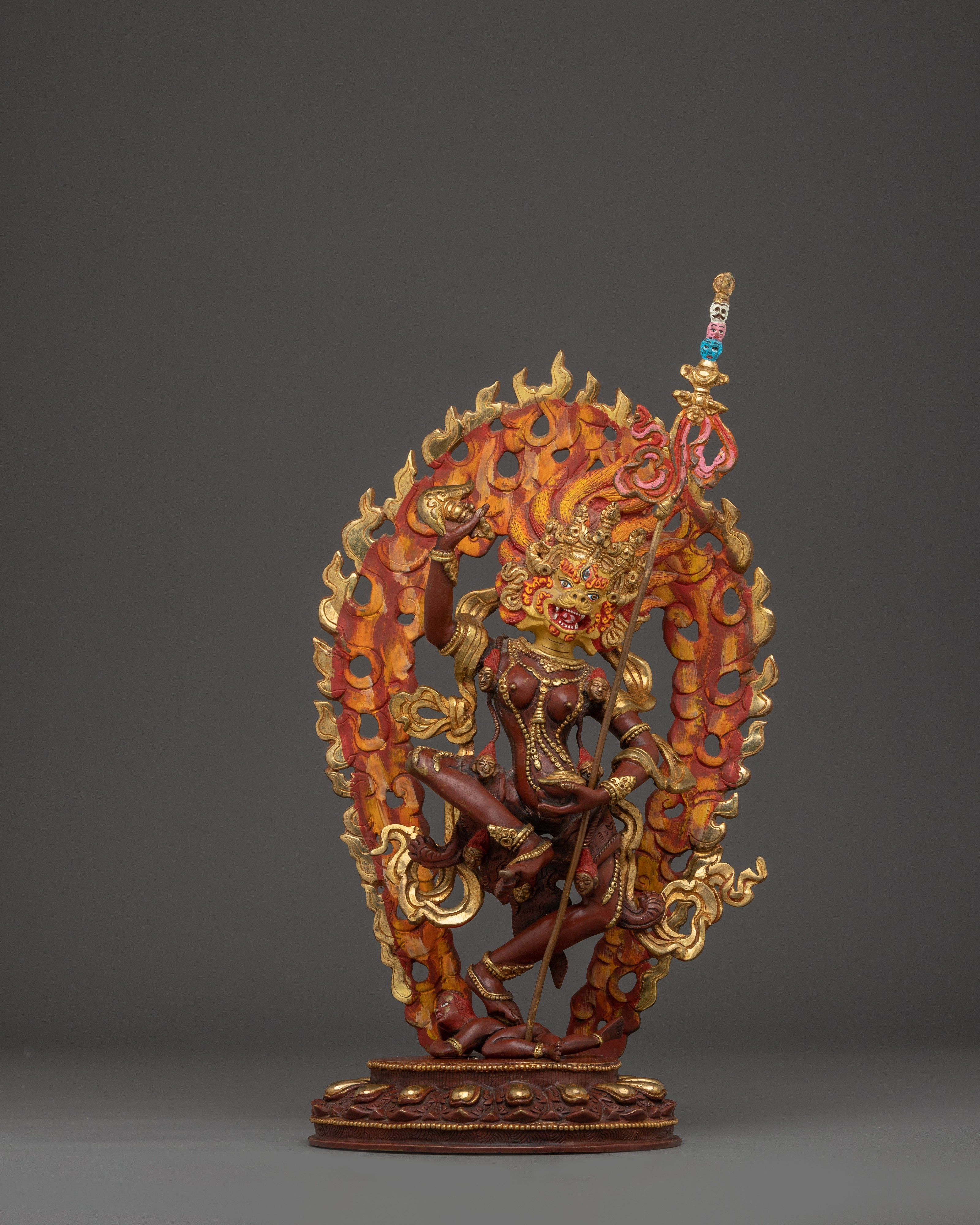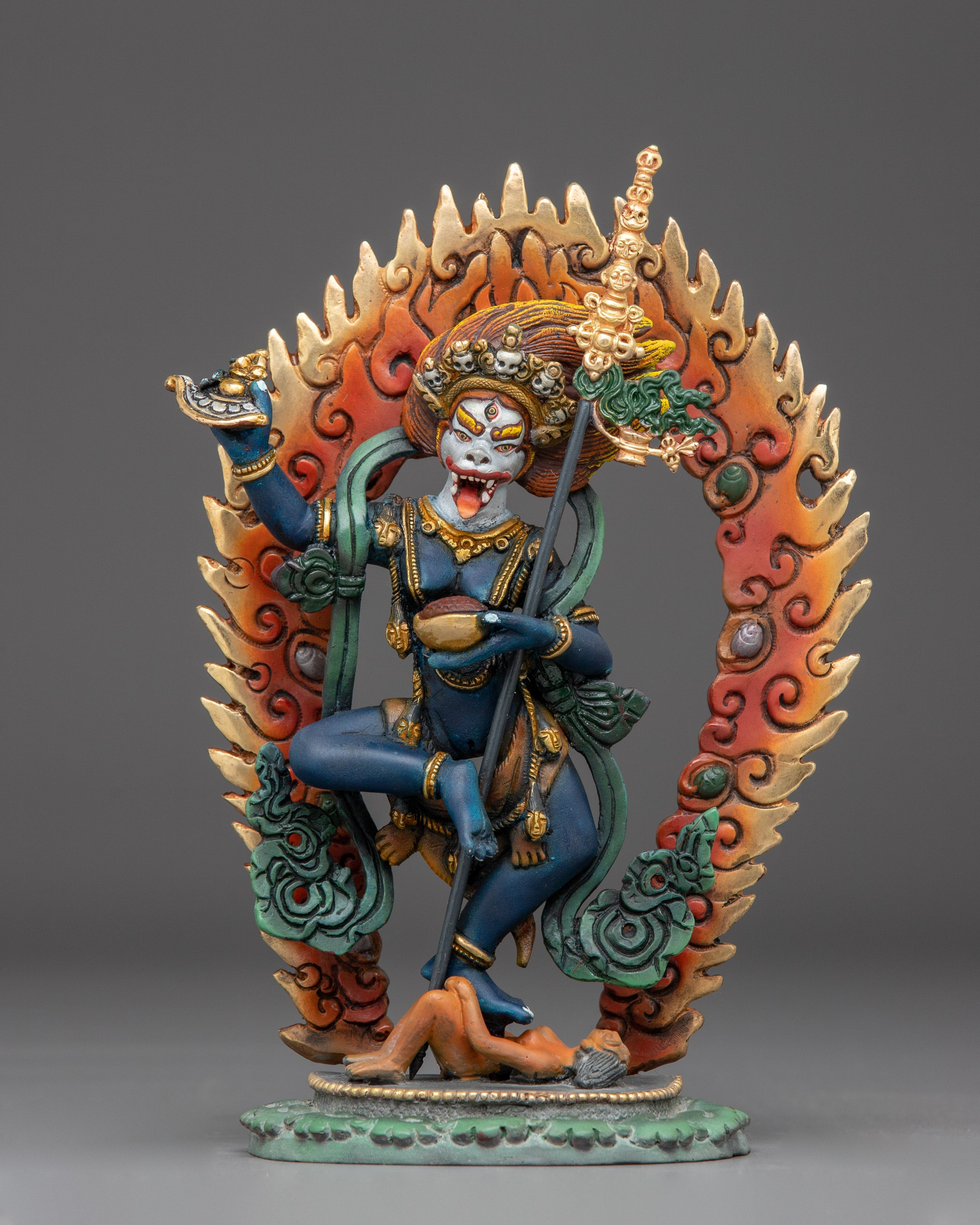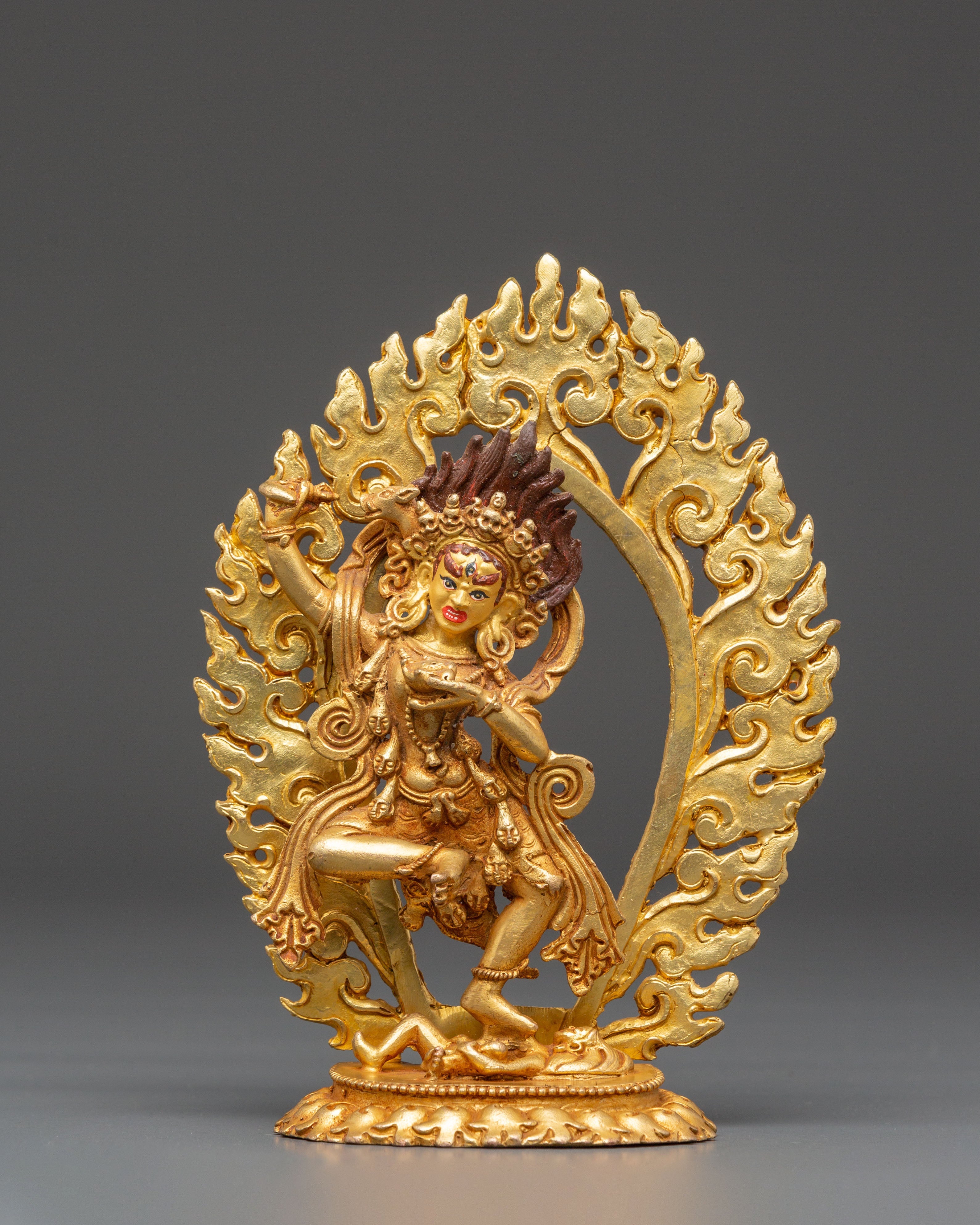Dakini Statue
123 products
Showing 1 - 24 of 123 products
Dakini: The Embodiment of Enlightened Energy in Buddhism
Background and Significance: Dakinis are captivating and well-recognized figures in Tibetan Buddhism, embodying feminine wisdom and spiritual energy. The term "Dakini," derived from the Sanskrit word, signifies "sky-dancer" or "space-goer." In Vajrayana Buddhism, these ethereal beings hold a profound place and are revered as divine entities and archetypal symbols.
Dakinis are essential due to their role as sources of transformative wisdom, acting as bridges between the spiritual and material realms. They challenge conventional gender roles by highlighting the knowledge and empowerment inherent in feminine qualities. These deities are often considered representations of the feminine principle in Buddhism, exemplifying the transformative potential of spiritual practice while guiding practitioners on their path to enlightenment.
Attributes and Iconography: Dakinis are typically depicted as radiant, beautiful, and often wrathful female figures. They may wear ornaments made of bones and skull crowns to symbolize mastery over the cycle of life and death. Their nudity symbolizes their liberation from societal norms and attachments to the external world.
The association of Dakinis with dance is one of their most recognizable features. Dakinis are often depicted in graceful and dynamic dance poses, signifying their ability to transcend mundane existence and establish a connection with the divine. Their dancing embodies the fluidity and spontaneity of spiritual enlightenment.
Associated Stories and Beliefs: It is believed that Dakinis reside in various places, including the sky, charnel grounds, and mountain peaks. They are often linked to charnel grounds, where they aid practitioners in acknowledging the impermanence of life and confronting their fear of death.
One of the most renowned stories involving Dakinis centers around the Indian scholar Padmasambhava, who brought Buddhism to Tibet in the eighth century. It is said that Dakinis provided Padmasambhava with teachings and guidance on his spiritual journey. These tales emphasize the spiritual guidance and profound wisdom of the Dakinis.
Dakinis are also associated with Chöd practices, a form of meditation in which practitioners offer their bodies to spirits to cultivate compassion and fearlessness. In Chöd, Dakinis are seen as allies and protectors on the practitioner's path.
Within Tibetan Buddhism, Dakinis holds an extraordinary and enigmatic position, representing both the divine and transformational aspects of the spiritual journey. They are essential because they serve as mentors, educators, and bearers of wisdom who challenge gender norms and offer profound insights into the nature of reality.
